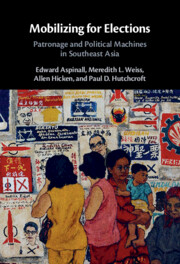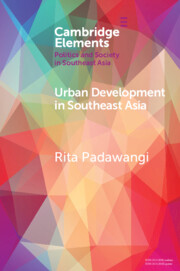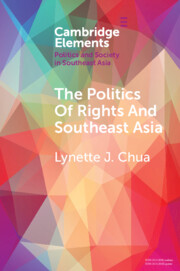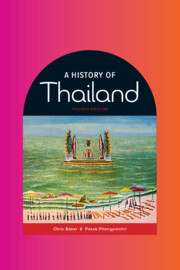1714 results in South-East Asian government, politics and policy
2 - Historical and Institutional Foundations
-
- Book:
- Mobilizing for Elections
- Published online:
- 04 August 2022
- Print publication:
- 11 August 2022, pp 31-66
-
- Chapter
- Export citation
7 - Patronage and Identity
-
- Book:
- Mobilizing for Elections
- Published online:
- 04 August 2022
- Print publication:
- 11 August 2022, pp 176-203
-
- Chapter
- Export citation
3 - Mobilization Networks and Patterns of Patronage
-
- Book:
- Mobilizing for Elections
- Published online:
- 04 August 2022
- Print publication:
- 11 August 2022, pp 67-98
-
- Chapter
- Export citation
Appendix A - Surveys
-
- Book:
- Mobilizing for Elections
- Published online:
- 04 August 2022
- Print publication:
- 11 August 2022, pp 257-264
-
- Chapter
- Export citation
Appendix B - Subnational Government and Electoral Systems
-
- Book:
- Mobilizing for Elections
- Published online:
- 04 August 2022
- Print publication:
- 11 August 2022, pp 265-272
-
- Chapter
- Export citation
Terms and Acronyms
-
- Book:
- Mobilizing for Elections
- Published online:
- 04 August 2022
- Print publication:
- 11 August 2022, pp xi-xii
-
- Chapter
- Export citation
8 - Subnational Variation
-
- Book:
- Mobilizing for Elections
- Published online:
- 04 August 2022
- Print publication:
- 11 August 2022, pp 204-234
-
- Chapter
- Export citation
Acknowledgments
-
- Book:
- Mobilizing for Elections
- Published online:
- 04 August 2022
- Print publication:
- 11 August 2022, pp viii-x
-
- Chapter
- Export citation
5 - Targeting Groups
-
- Book:
- Mobilizing for Elections
- Published online:
- 04 August 2022
- Print publication:
- 11 August 2022, pp 125-149
-
- Chapter
- Export citation
Appendices
-
- Book:
- Mobilizing for Elections
- Published online:
- 04 August 2022
- Print publication:
- 11 August 2022, pp 257-272
-
- Chapter
- Export citation
1 - Patronage and Political Machines in Southeast Asia
-
- Book:
- Mobilizing for Elections
- Published online:
- 04 August 2022
- Print publication:
- 11 August 2022, pp 1-30
-
- Chapter
- Export citation

Mobilizing for Elections
- Patronage and Political Machines in Southeast Asia
-
- Published online:
- 04 August 2022
- Print publication:
- 11 August 2022

Taiwan's Exceptionalism
-
- Published by:
- Jagiellonian University Press
- Published online:
- 16 July 2022
- Print publication:
- 21 August 2022

Urban Development in Southeast Asia
-
- Published online:
- 23 June 2022
- Print publication:
- 21 July 2022
-
- Element
- Export citation

The Politics of Rights and Southeast Asia
-
- Published online:
- 08 June 2022
- Print publication:
- 07 July 2022
-
- Element
- Export citation

Sexuality and Gender Diversity Rights in Southeast Asia
-
- Published online:
- 28 May 2022
- Print publication:
- 23 June 2022
-
- Element
- Export citation

A History of Thailand
-
- Published online:
- 13 April 2022
- Print publication:
- 07 April 2022
Notes
-
- Book:
- A History of Thailand
- Published online:
- 13 April 2022
- Print publication:
- 07 April 2022, pp 335-352
-
- Chapter
- Export citation
Illustrations
-
- Book:
- A History of Thailand
- Published online:
- 13 April 2022
- Print publication:
- 07 April 2022, pp xi-xii
-
- Chapter
- Export citation
Glossary of names
-
- Book:
- A History of Thailand
- Published online:
- 13 April 2022
- Print publication:
- 07 April 2022, pp 353-362
-
- Chapter
- Export citation

